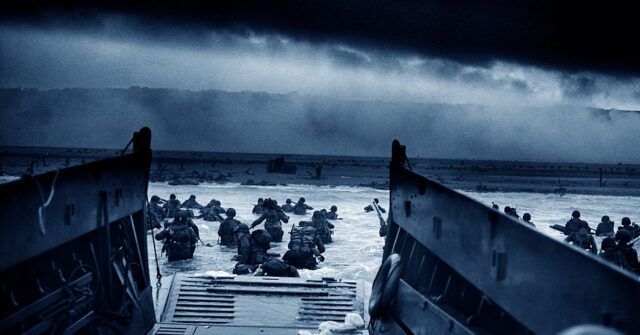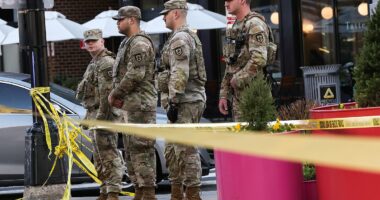Share this @internewscast.com
“June the sixth is the price of freedom”, U.S. Secretary of Defense Pete Hegseth said at the American War Cemetery in Normandy, France on Friday morning.
Veterans, dignitaries, and members of the public gathered in Normandy on Friday morning to commemorate the Normandy Landings that began on D-Day, June 6th 1944. The largest amphibious invasion in history, the landings opened a new front in the Allied war against Nazi Germany and opened a path for the invasion of Germany.
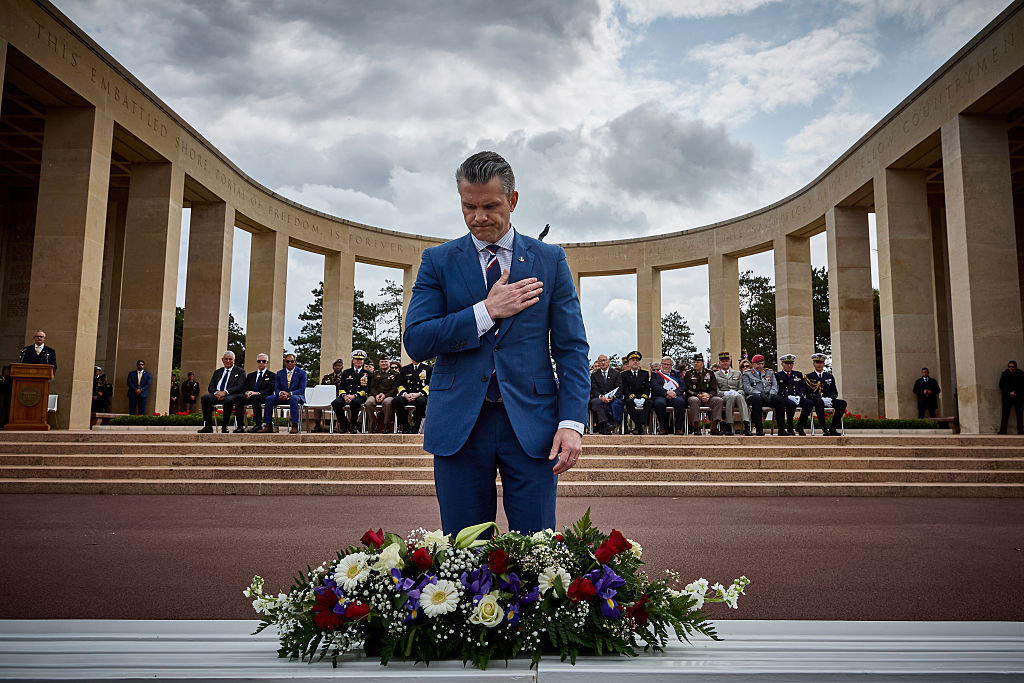
COLLEVILLE-SUR-MER, FRANCE – JUNE 06: US Secretary of Defence Pete Hegseth gestures as he lays a wreath during a ceremony at the Normandy American Cemetery to mark the 81st anniversary of the D-Day landings during World War II on June 06, 2025 in Colleville-sur-Mer, France. Today marks the 81st Anniversary of ‘Operation Overlord’, the Allied invasion of Normandy during World War II that led to the liberation of Western Europe and eventual defeat of Nazi Germany. (Photo by Kiran Ridley/Getty Images)
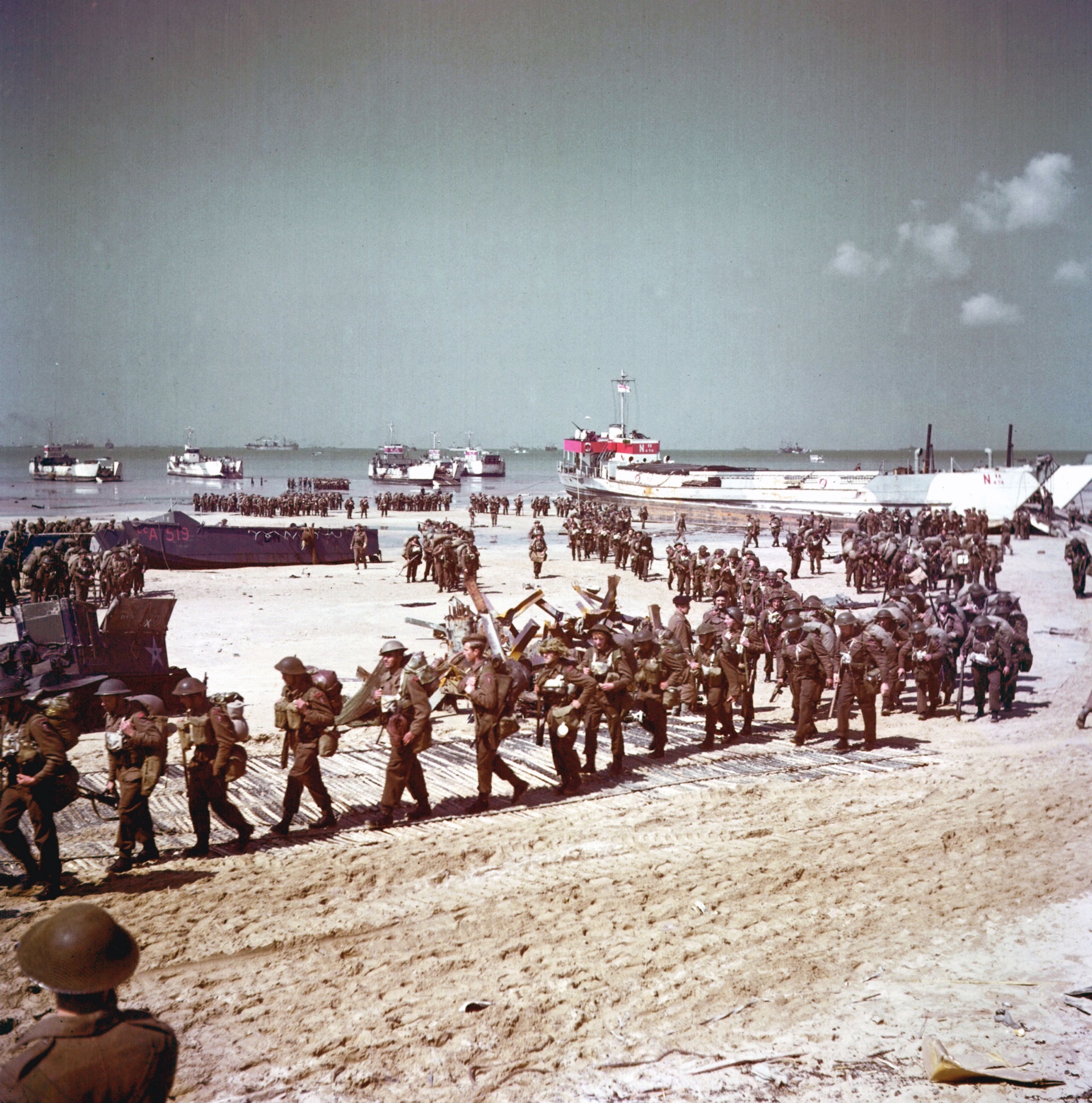
British soldiers at Juno Beach during the World War Two, D-Day landings in France 1944. (Photo by: Photo12/Universal Images Group via Getty Images)
U.S. Secretary of Defense Pete Hegseth spoke at the American War Cemetery at Colleville-sur-Mer, Normandy overlooking Omaha Beach on Friday morning and paid tribute to the Allied nations that fought ashore in the Normandy landings, stating: “the invasion would include brave troops from the U.S., Great Britain, Canada, France, Australia, New Zeland, South Africa, Belgium, Norway, Greece, and Holland. On the ground the French resistance covertly aided the effort”.
The first wave of men displayed “unfathomable” courage and were “decimated” by German machine gun and mortar fire, Hegseth said, stating: “This day, June the sixth is the price of freedom. We remember the losses, we celebrate the victories, we rededicate ourselves to the fight for liberty, security, and peace”. To the veterans present, he said “gentlemen, thank you”.
Normandy was not the most heavily defended part of France’s northern coastline, with German defences concentrated in Calais, the closest point to the British shore. Nevertheless, landing forces faced intense gunfire from entrenched German positions and mined beaches, with thousands of Allied soldiers made casualties in just the first day.
The landing was divided into five beaches, with American troops landing at Utah and Omaha, and British and Canadians landing on Gold, Juno, and Sword.
Some 156,000 Allied troops came by land and sea, carried and supported by 6,939 ships and 11,590 aircraft, the Portsmouth D-Day Museum states. By June 11th, when the beachheads had been fully secured and linked up, 326,547 troops, 54,186 vehicles and 104,428 tons of supplies had been landed. Within two months, more than two million troops went ashore to fight through France and Germany.

Photograph of D-Day landing craft, boats and seagoing vessels used to convey a landing force (infantry and vehicles) from the sea to the shore during an amphibious assault. Dated 1944. (Photo by: Photo 12/Universal Images Group via Getty Images)
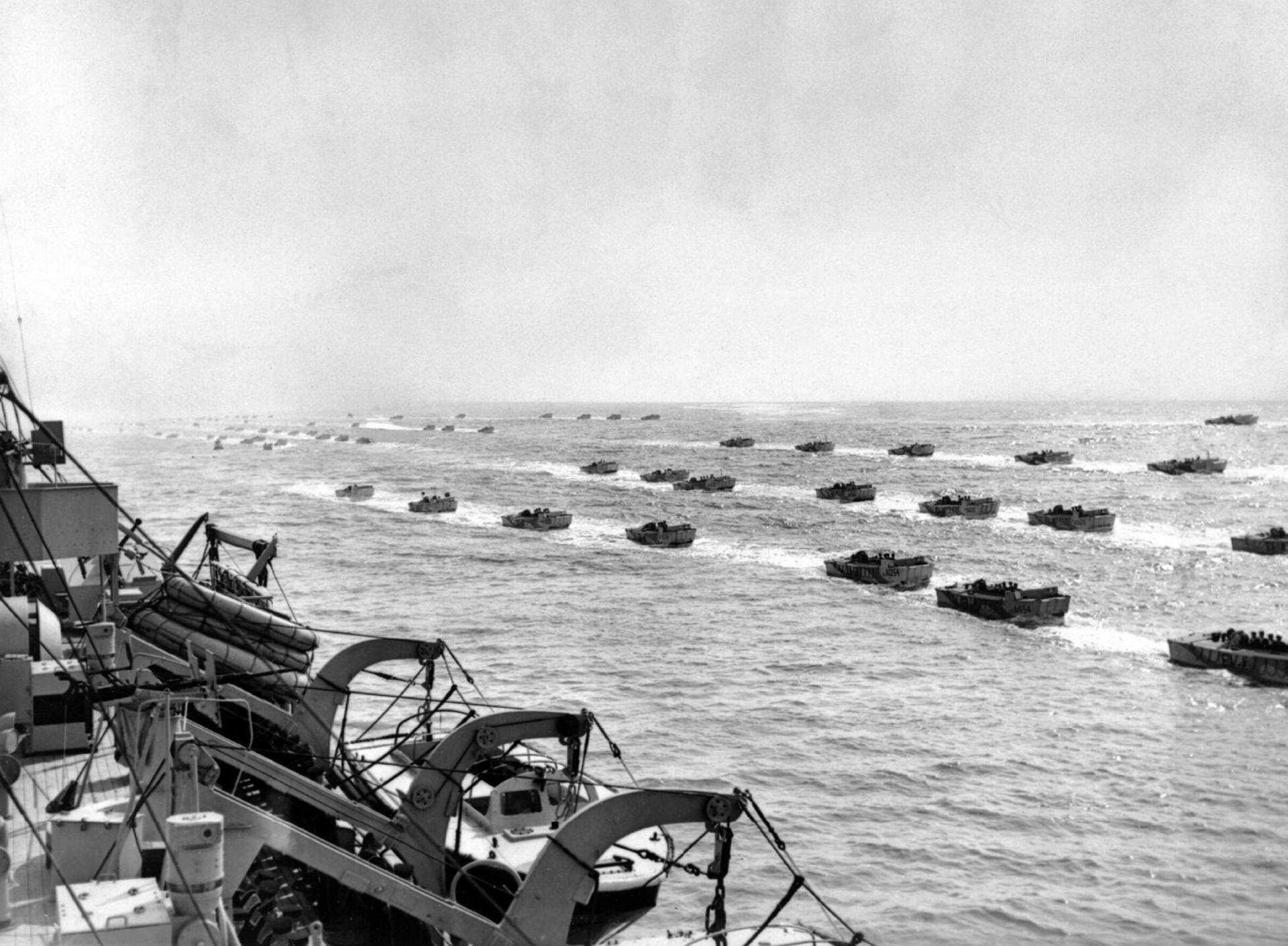
Photograph of Allied landing craft underway to the beaches of Normandy. Dated 1944. (Photo by: Universal History Archive/Universal Images Group via Getty Images)
